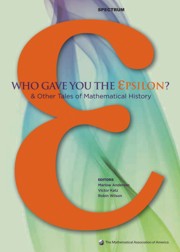Book contents
- Frontmatter
- Introduction
- Contents
- Analysis
- Geometry, Topology and Foundations
- Algebra and Number Theory
- Surveys
- Foreword
- The International Congress of Mathematicians
- A Popular Account of some New Fields of Thought in Mathematics
- A Half-century of Mathematics
- Mathematics at the Turn of the Millennium
- Afterword
- Index
- About the Editors
The International Congress of Mathematicians
from Surveys
- Frontmatter
- Introduction
- Contents
- Analysis
- Geometry, Topology and Foundations
- Algebra and Number Theory
- Surveys
- Foreword
- The International Congress of Mathematicians
- A Popular Account of some New Fields of Thought in Mathematics
- A Half-century of Mathematics
- Mathematics at the Turn of the Millennium
- Afterword
- Index
- About the Editors
Summary
On the sixth of August at the Palais des Congrès in the Paris Exposition, was held the opening session of the second International Congress of Mathematicians. The president, Poincaré, is regarded as the greatest of living mathematicians. Among the vice presidents in attendance were Gordan, Lindeloef, Lindemann, Mittag-Leffler.
Representing Japan was Fujisawa; Spain sent Zoel de Galdeano; the United States, Miss Scott. The president of the section of Arithmetic and Algebra was Hilbert; of Geometry was Darboux, of Bibliography and History was Prince Roland Bonaparte. Among the most interesting personalities present may be mentioned Dickstein of Warsaw, Gutzmer of Jena, Hagen of Washington, Laisant of Paris, Langel of Golfe Juan, Lemoine of Paris, Delury of Toronto, Padoa of Rome, Shroeder of Carlsruhe, Sintsof of Yekaterinoslav, Stringham of Berkeley, Tannery of Paris, Vasiliev of Kazan, Whitehead of Cambridge.
Of the many important papers presented two may be selected for their general interest and the enthusiasm with which they were received. These are: The Mathematics of the Old Japanese School by Fujisawa, and The Problems of Mathematics by Hilbert.
Among other matters of extraordinary importance, Fujisawa showed his astonished audience that the Japanese had independently discovered the zero and by a mysterious coincidence used for it a circular symbol as did the Hindus and as do we. He showed that the Japanese had rectified the circle with an accuracy far exceeding Archimedes and only paralleled in our modern developments of pure mathematics.
- Type
- Chapter
- Information
- Who Gave You the Epsilon?And Other Tales of Mathematical History, pp. 383 - 384Publisher: Mathematical Association of AmericaPrint publication year: 2009



